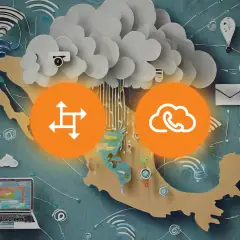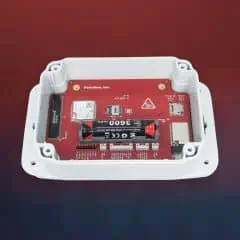Watch the webinar recording to see how Dashbase helps you:
- Gain end-to-end visibility of call flow through your platform and across different vendor systems
- Enable more of your people to solve cases without escalation
- Empower your experts to solve complex cases up to 30–40% faster
- Find issues without involving your customer, since there’s no need to reproduce the error

At the beginning of the webinar, we polled the participants and learned that only about one fifth (22%) use a single system in their communication network – whether that’s PortaSwitch or any other platform. The majority of participants use either multiple non-PortaSwitch systems (18%) or PortaSwitch combined with other systems (46%).
For complex VoIP networks like these, troubleshooting involves searching through each of the network’s systems separately, browsing large text files using a command-line interface, then consolidating the data from these different sources to get to the problem’s root cause. And it becomes even more challenging if the company is short of support engineers – and, as our poll results show, many companies are:
How many first-level support people dealing with SIP troubleshooting do you have?
- Less than 5: 46%
- 5–10: 25%
- Over 10: 25%
How many SIP-related tickets/issues do they process per day?
- Less than 50: 73%
- 50–99: 12%
- 100–500: 4%
- 500+: 4%
How many of those cannot be solved by first-level support and have to be escalated?
- Less than 10%: 54%
- Up to 25%: 19%
- Over 25%: 19%
(Percentages will not add to 100 as non-applicable respondents were excluded.)
As you can see, most respondents have less than 5 people handling first-level support and can process less than 50 tickets per day. Escalation is required for a full 10–25% of issues. This kind of complexity with VoIP troubleshooting leads to poor customer experience: if you can’t sustain a large staff of support engineers, you have to keep your clients waiting.
This is where Dashbase comes to the rescue. It provides end-to-end data and visibility across multiple network components (e.g., a single call that travels through edge SBC – PortaSwitch – Microsoft Teams Direct Routing SBC) for easier troubleshooting, quicker case resolution, and better customer experience.
Webinar Recording Q&As
Q: What data does Dashbase collect?
A: Dashbase is powered by underlying logs. Its collectors ingest these logs along with the SIP data from PortaSwitch or any other industry-standard tool, including custom-made applications. Instead of looking at the text files and trying to merge the info from all of these different sources, you’ll be able to search in a single UI through the whole network, drill down from calling diagrams into the full logs, and navigate those logs for troubleshooting and root cause analysis. Dashbase also lets you create custom dashboards, calculate custom metrics, and even monitor those metrics through alerts.
Q: What is the Dashbase pricing model?
A: Generally it depends on the daily data volume that’s ingested into Dashbase. The good news is that during Q3 Dashbase has a special discount for PortaSwitch users.
Q: Does Dashbase process only the log files? What’s under its covers?
A: Underneath the UI of Dashbase is a datastore created specifically for logs. It can handle huge amounts of logs and search through them in real-time. You can filter the logs by IDs, events, or other specifics, and drill down from the calling diagrams into the logs. No matter how many terabytes of data you have, it all happens super quick because of that Dashbase datastore.
Q: How can I get RTP stats and MO scores for calls across all systems?
A: Dashbase doesn’t calculate MOS, though it can collect them from other sources and display them in real-time (as well as the RTP stats). Meanwhile, you can easily and intuitively monitor call quality in PortaSwitch – all thanks to the Call Quality Monitor module available in the releases starting from MR81. This module monitors the quality of a call according to four criteria – latency, jitter, MOS, and packet loss – then rates the quality as good, fair, or poor for a given network infrastructure. The color indicator in the customer’s xDRs identifies the resulting call, and you can see which of the four criteria was underlying the issue.
Q: Where does Dashbase store the data? Is it compliant with data privacy regulations?
A: Dashbase runs in your own private cloud environment in a Kubernetes cluster. This means that you keep complete control over your data, and that you are fully compliant with local regulations in terms of data privacy and safety. No matter what cloud infrastructure you might use – Amazon, Azure, Google – you just need to run some simple commands to deploy the complete system.

















